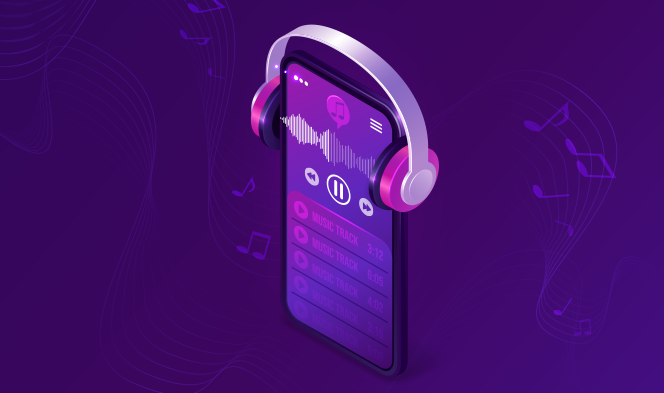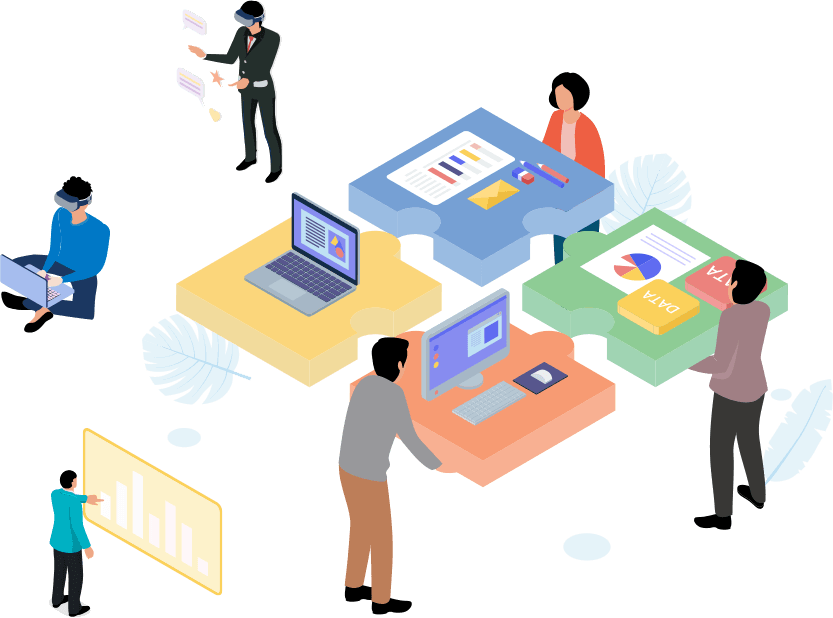2807
Your Guide to Creating a Music Streaming App
04 Mar, 2021
6 min read
2807
04 Mar, 2021
6 min read

If you are a millennial like me, I’m sure you must have bought music albums in your childhood. It was a time when people would line up outside record stores to get a copy of any new album. Golden days!
Cut to the era of Gen Z when Napster laid the foundation of music streaming in 1999. It was basically a peer-to-peer file sharing service and rose to fame in a short span. But the fame was short-lived and it came under fire when the music industry opposed it. Then came 2003 when Apple unveiled iTunes Store – again a big milestone in the music industry. Some more online audio streaming service providers like Pandora, Soundcloud, etc. followed suit.
However, the launch of Spotify in 2008 became the watershed event in the history of music streaming. Since then to date, a number of companies have launched online music streaming apps and are eyeing on the success in music streaming. In fact, the global music streaming market size is forecast to reach $76.9 bn by 2027.
If you too want to cash in on music streaming with your own music streaming app like Spotify, now is the time!
Whether you create your app on Android, iOS, or both, there are a few steps common for all, Android app development, iOS app development, or cross-platform app development of a music streaming service.
Below are the steps to build a music streaming app:
There are three common types of music streaming apps that you can pick from:
As the owner of a music app, you’ll need to obtain a license to offer music content on your app. A Public Performance Rights license is important to get to create your own music app.
In the US, you can reach out to the American Society of The American Society of Composers, Authors and Publishers (ASCAP) or Broadcast Music Incorporated (BMI) for the required license.
In Europe, the Society of European Stage (SESAC) provides this license.
If you stream music without a license, you may have to face a copyright infringement suit and a heavy penalty of up to $150,000 per song you play.
Before building a music app, consider the factor of storage. There will be a need for a back-end server to support streaming. You can consider popular cloud service providers like Amazon Web Services, Microsoft Azure, Oracle Cloud, Google Cloud Platform, etc.
There is another option you can pick. You can use SDK and API of Spotify or SoundCloud to stream music. However, adhere to the restrictions in Terms of Use of these development tools strictly.
In the third option, you can create a data storage app on a self-hosted server without any third-party streaming APIs.
iOS and Android are the two most common platforms these days. To stay competitive, consider both Android app development and iOS app development for your music streaming service.
In case you have strict initial budget restrictions, choose the platform based on your target audience. For instance, you can go for iOS app development to target the US’ audience. If you want to target Europe and Asia, Android app development would be a better choice.
If you have a limited budget, a Minimum Viability Product (MVP) can be a suitable choice. Later on, you can add advanced features as you start making profits with the first launch of your app. An MVP version will also help you attract investors for the funding you need to take your app further.
So, here are the must-have (MVP) features you must have in your music app.
If you also want to build a music app with all the latest features in it, we are there to help you with that.
Now that you know the basic features you should provide in your MVP version, here are the advanced features you can include.
The freemium model will increase chances of conversion of your free subscribers into your paid subscribers at a later stage. It thus can help increase your app revenue too.
A music streaming app is a great business opportunity as the music streaming industry is thriving. If you are also looking to launch a music streaming app, we’ve got you covered on all fronts. We can help you work out your idea and build a feature-rich music app for you.
Our process mainly includes three phases. We first analyze, research, and understand your project and scope for development. After deciding the initial design and app flow, the development phase follows. After development, our QA team tests the app and ensures it is 100% glitch-free. Our marketing experts can help you build a strong promotional strategy for your app to reach the right audience in a short span of time.
All product and company names are trademarks™, registered® or copyright© trademarks of their respective holders. Use of them does not imply any affiliation with or endorsement by them.

.NET
20
By Devik Gondaliya
15 Jul, 2025

.NET
25
By Devik Gondaliya
15 Jul, 2025

Odoo
60
By Biztech
15 Jul, 2025